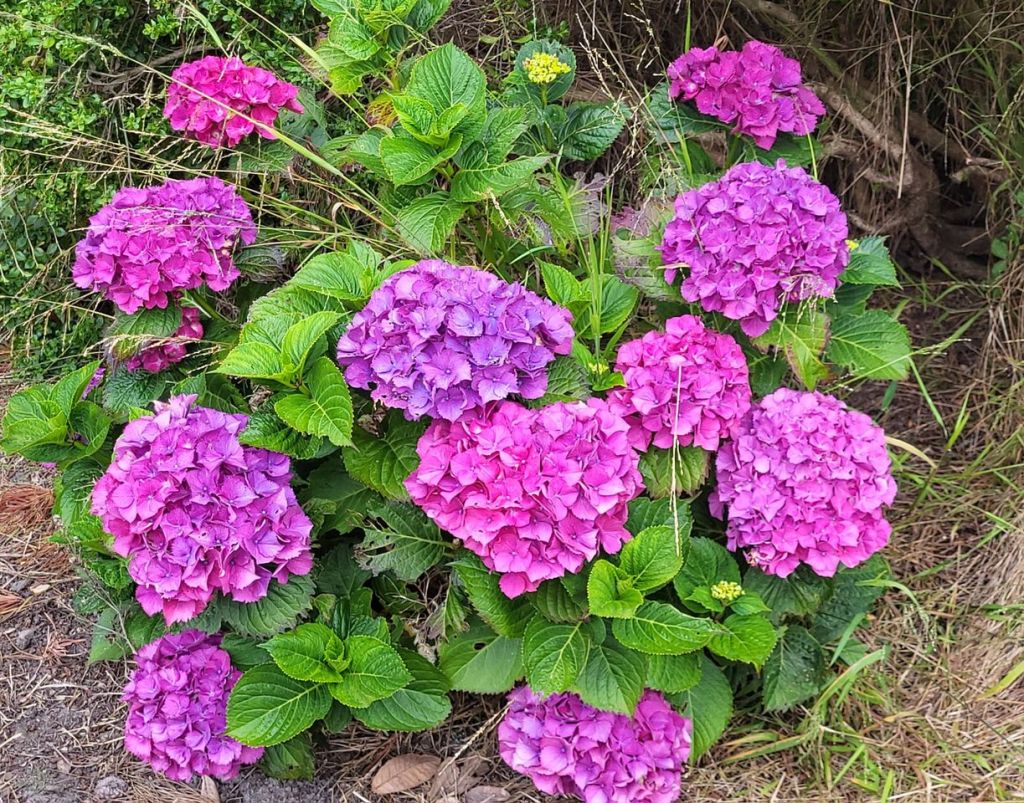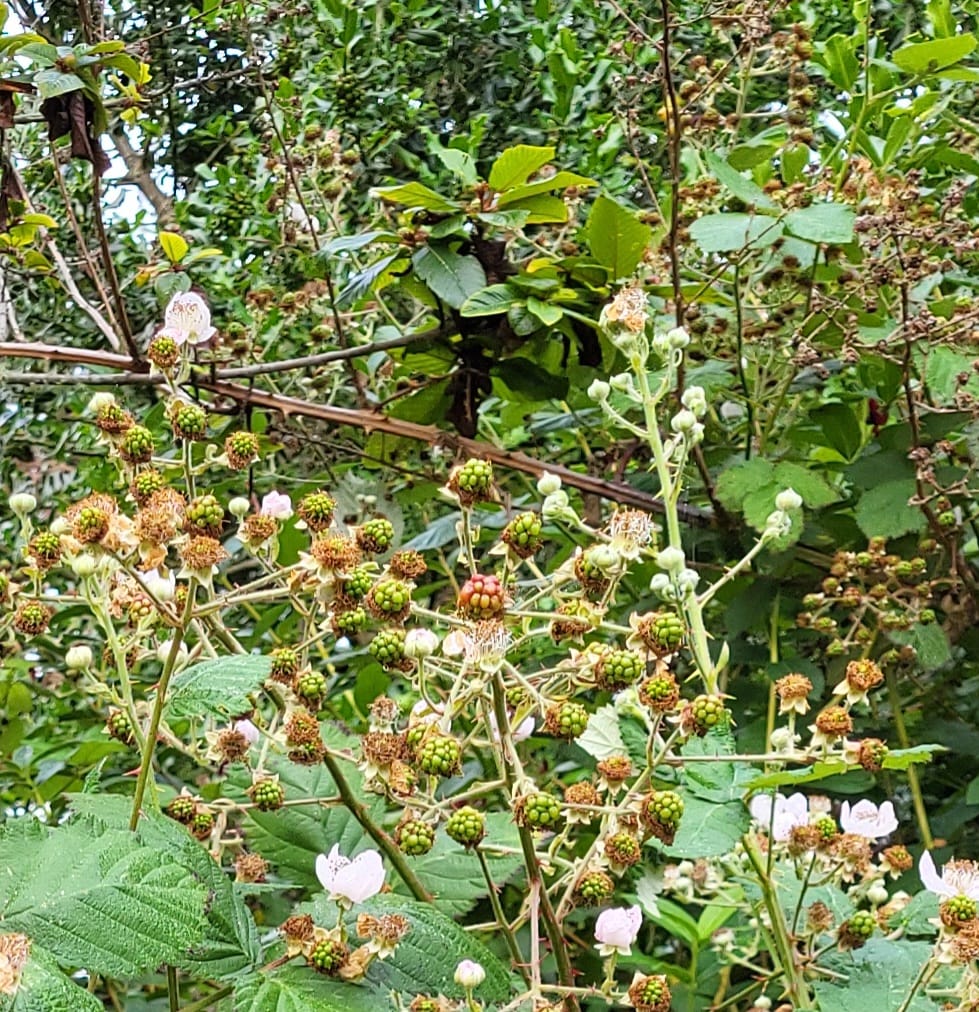
Monday, July 17, 2023
On Monday, July 17th we pulled stakes and headed towards Fort Bragg. We drove through Willets (4988 souls)- Gateway to the Redwoods, final home of the racehorse Seabiscuit, it’s iconic “Willits” sign arching over the roadway a la Reno’s biggest little city sign. In fact the sign is a repurposed Reno sign!

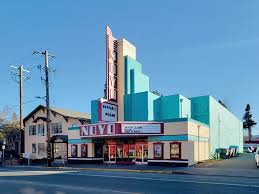
This place became a boomtown due to the tanbark industry.The town is very clean and looks to be in good health in spite of the economic downturn. We continue west on Cal 20 which transitions from the flats quickly into more mountainous driving. I should say really mountain driving as the road twists and turns with 25 mph curves in abundance on a relatively narrow roadway with zero for a shoulder. One fella who owned a home along the route even had a sign out saying “No turn out- Ditch!” on the side of his driveway to warn drivers of large vehicles not to use his driveway as a slow vehicle turn out.
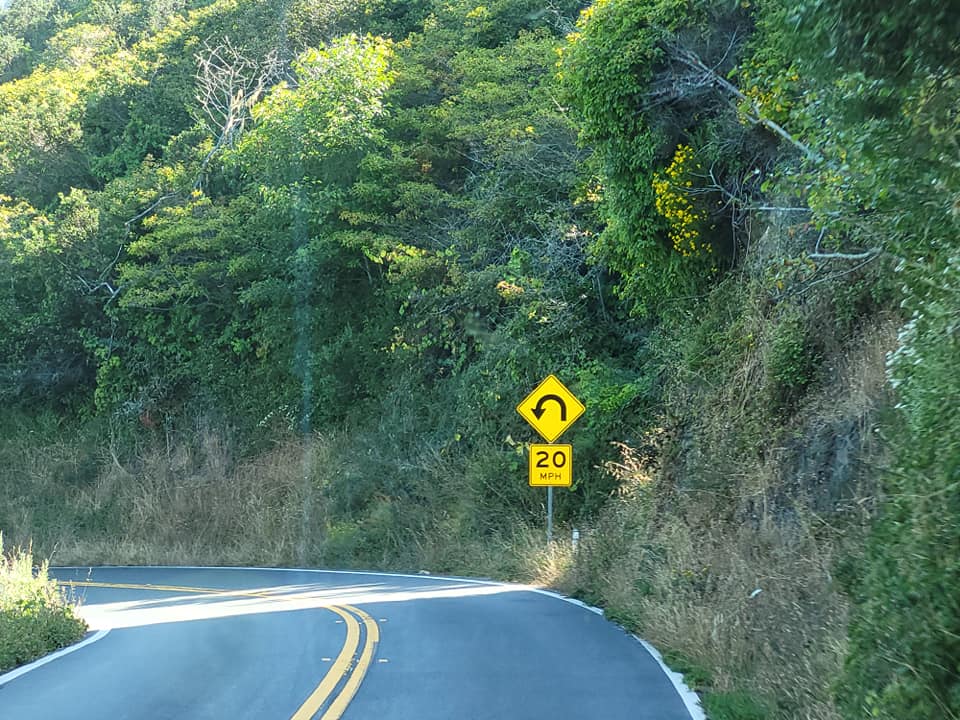
After a bazillion twists and turns through a beautiful forest consisting of hardwood trees, conifers and even coastal redwoods we stop at the Jackson Demonstration State Forest. The forest was established in the 1940’s to demonstrate growing timber and woodlot management to farmers. It’s the largest of Cal Fire’s demonstration forests at 48,652 acres. The most common tree is the coastal redwood but visitors can also find douglas fir, grand fir, hemlock, bishop pine, tanoak, alder, madrone and bay myrtle. We stop at the very nice visitor’s center, a large meadow in which lupins are beginning to bloom surrounded by all types of trees, including the iconic coastal redwood. Picnic tables are scattered around for visitor’s enjoyment.
We continue on, hoping the road will straighten out. I doesn’t- until almost to the Fort Bragg city limits. The distance traveled today was only 74 miles- it took us 3 hours to do it as last 35 miles takes 2 hours and 15 minutes in a car-a while longer in an RV! We arrive about two hours before check in time at the RV park, call to ask if it’s OK to check in early, and our call goes to voicemail.
Flora around Pomo RV Park and Campground
We chance it and all is good. Pomo RV Park and Campground is just south of downtown Fort Bragg just past Noyo Harbor. It’s a little tight maneuvering inside the park. The campsites for the most part are separated by thick vegetation offering great privacy. A big grassy area is near the center of the park. Lots of flowering plants are eye candy including hydrangea, lilac, sweet peas, roses, nasturtium, pine and deciduous trees making for very colorful grounds. We like it here!

On Tuesday we cruised downtown Fort Bragg (6970 souls). Fort Bragg was established as a military post on the Mendocino Indian Reservation in 1857. It was abandoned in 1864 and the Indian Reservation discontinued in 1866. By 1873 Fort Bragg had an established lumber port at Noyo. The land of the reservation was returned to the public and offered for sale at $1.25 an acre to settlers. The Fort Bragg Redwood Company was incorporated in 1885, merged with the Noyo River Lumber Company in 1891 and became the Union Lumber Company. The mill was eventually sold to Boise Cascade in 1973 and closed in 2002.

The mill used to offer tours and to the public and I was lucky enough to visit the mill a couple of times in my younger years. The San Francisco Earthquake of 1906 damaged all brick buildings and many homes were knocked off their piers and caused major fires downtown. The folks, being resourceful, rebuilt within 12 months!
In 1901 the Union Lumber Company incorporated the National Steamship Company to carry lumber, passengers and supplies. All creature comforts and food were delivered by steamship. In 1905 plans were made to get the California Western Railroad pushed through to Willits linking the area to San Francisco.
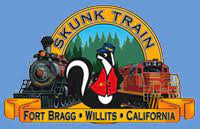

The infamous Skunk Train that runs between Willits and Fort Bragg was originally built in 1885 by the Fort Bragg Redwood Company as the Fort Bragg Railroad to carry coast redwood logs from logging grounds to Noyo Harbor. It was extended in 1911 to allow connection with the Northwestern Pacific Railroad at Willits, 40 miles from Fort Bragg. The trail only carries passengers today through very scenic redwood country.
Some other sites in the area are MacKerricher State Park, and Glass Beach, a former dump adjacent to the ocean that still yields thousands of pieces of ocean ground glass from long ago. Down south a short distance is the Point Cabrillo Lighthouse and the always popular and scenic town of Mendocino. Also in that area are Jug Handle State Natural Preserve and Russian Gulch State Park.
I probably missed a half billion things to see and do in and around Fort Bragg. If you want to learn more I guess you’ll just have to come and see it for yourself! It’s a great place to visit!

